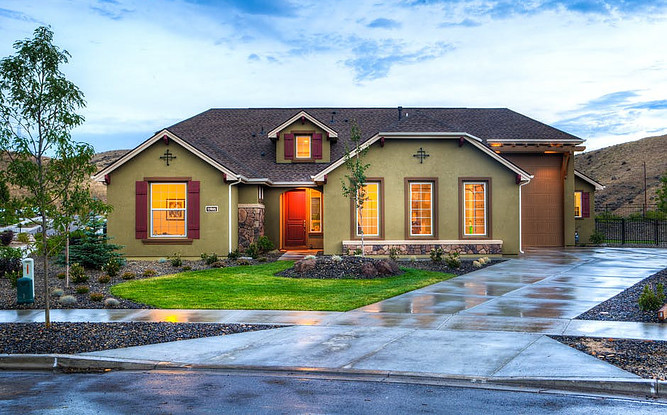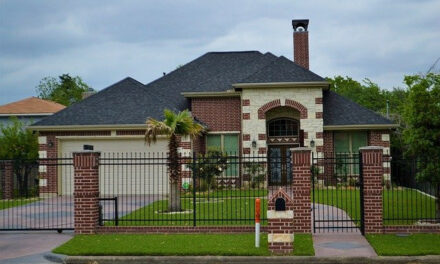It is indeed against the law to drive over the kerbside unless there is an invert of a driveway crossover. This article will reveal what is an invert of a driveway crossover and how it is different from a crossover itself.
Let’s start rolling by defining a driveway first.
What is a driveway?
According to Wikipedia, a driveway is a private road or local access to one or a small group of properties, which is owned by an individual or company.
Generally, driveways do not have traffic control lights, but some would always bear heavy traffic, particularly the ones that lead to parks and commercial businesses.
Some driveways are more decorative and beautiful compared to some public roads because some owners invest in their construction. Usually, driveways are not snow blown, not resurfaced or maintained by the governments, but are built to conform to the design of a connected building or other houses.
Some of the major materials used for driveways are decorative bricks, concrete, gravel, asphalt, block paving, decomposed granite, cobblestone, and surrounded with ground-cover plants or grass.
Generally, driveways are used as tracks to private houses, car parks, or garages, though some driveways serve different homeowners.
Some residential driveways are sometimes also used for recreation, automobile repair and washing, and garage sales…etc.
Type of inverts may depend on the type of driveway to your property, so let’s cover the types of driveways now.
Types of Driveway
There are several types of driveways according to the materials and finishes you choose to meet your desired designed tastes. These types include;
- Concrete driveways
This is among the most common driveway types. People often choose them because they tend to last longer, and they are exceptionally durable, which can serve you for several years without having to repair them or installing a new one.
- Asphalt driveway
This is another common driveway. The asphalt makes the driveway look presentable and clean. An asphalt driveway is not expensive, so to speak, but makes a home very attractive, even though they are not usually easy to maintain.
- Brick driveway
Though this type of driveway is not too common, some people go for it and install them. They are very beautiful to look at but are very expensive at the same time. To be able to install a brick driveway properly, you need to hire a professional experienced installer.
- Gravel driveway
This type is more common in rural areas. It is seen as a common way to upgrade a dirty driveway Also, it does not require much expertise to install one.
- Recycled glass driveway
This might sound odd but actually, glass driveways look good and can be a nice handy solution too.
Recycled glasses are not ordinary glasses, and are not going to cut your tires, but are used to construct these unusual driveways. These glasses are very environmentally friendly. It is also not too expensive to maintain.
Tip: Did you know how to decide if to do the driveway or fence first?
What is a Crossover of a Driveway?
A crossover of a driveway is a vehicular crossing located between the house line and the edge of the road which provides reasonable and safe access to the house. A crossover of driveways are majorly designed for some purposes such as;
- To allow access to a house or property,
- To help control the verge area erosion,
- To help provide a safer walk area for pedestrians.
Generally, homeowners are responsible for building and repairing driveway crossovers to their houses. Crossovers are not always constructed until a new home is almost completed.
While the house is still under construction, the owner must get a verge permit to create a temporal crossover with crushed stones (following the specification of the city). When the building is finally completed, it is required that the temporal crossover should be removed while the verge is reinstalled. A permanent driveway crossover must be then constructed to provide access to the house.
A crossover should reduce clash with existing obstructions, and increase the on-street car parking availability, and ensure convenient and safe access to the connected house.
What is an Invert of a Crossover?
An invert is the part of kerbing and channel adjacent to a pathway or driveway which is flatter than the average profile to provide easy access for both pedestrians and vehicles to the crossover to a house.

Invert crossings are generally important when using a barrier Kerb (or Curb) profile. The invert entry point’s height depends mostly on the type of channel and Kerb outside the house.
When a house access does not have an invert, and there is no drivable laybackKkerb (rollover Kerb)., the council provides the homeowner with an inverted subject that covers all added cost to construct at least a minimum standard of a driveway entrance.
How is an Invert Different from the Crossover?
An invert is part of a crossover, but it is usually a little higher than the crossover and flatter than the average Kerbing profile to allow easy access for both pedestrians and vehicles to the property.
An invert is also different from crossover as they are generally made of concrete while crossovers are built with several materials according to the choice of the property owner.
Inverts are usually lower part of the Kerb and the same width as the normal Kerb, but a single crossover extends up to 3-4 meters wide and double 5-7 meters.
Note that it is the responsibility of the homeowners to construct and maintain the Kerb and the driveway but the council engineer must survey the site before laying of paving to ensure appropriate levels are observed for footpath use and flood protection.
Tip: Sometimes, it is safe to concrete an invert and driveway in the rain. Sometimes, it is not.
Conditions for Crossover and Invert Construction
- Vehicle crossover should be 5 – 7 meters wide for a double driveway and 3 – 4 meters wide for a single driveway.
- The width for crossover and invert must be reinstated to a footpath, verge, and Kerbing at the time the new crossover and invert is constructed.
- Crossover and invert should be constructed 10 meters away from any intersection.
- Crossover and invert should not be constructed one meter of stormwater entry pits or stobie poles.
- The crossover must be non-slip with a concrete aggregate, paver, or brushed finish.
- No street furniture such as street signs, street trees, stobie poles, Telstra infrastructure, side entry pits, or traffic signs should be removed because of crossover and invert unless with approval by the relevant authority.
Conclusion
If you need access to your home, you will have to apply to the council for permission. An invert of a driveway crossover can only be constructed when approved by the council as they are responsible for pavements and roads.
After all, Inverts help to protect your car from damage that comes from crashing over the Kerb.






